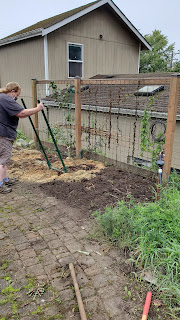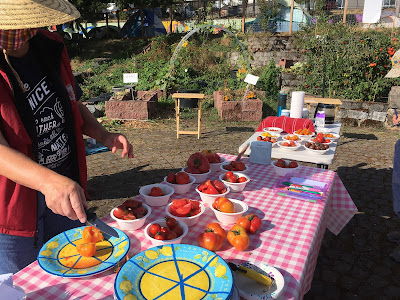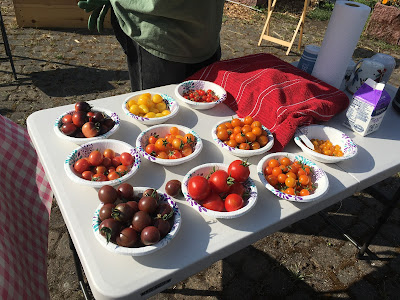November 2020
We have finished putting the garden to bed. We did this by adding some lime and Azomite to each of our beds, then covering with compost and finally with burlap sacks. The lime adjusts the pH of our beds from acidic to more neutral. Winter rains leach out the nutrients that balance the soil pH. Azomite is a product that adds back in trace minerals. Compost will continue to break down in the soil and covering with burlap keeps the microorganisms in the soil active throughout the winter. When we uncover the beds in early spring we will add nitrogen, phosphate and potassium. If we were to add these in the fall they would just get leached out by the winter rains.
It is important to note that our beds were not made on native soil, but mostly from Tagro that was brought in. Native soil that contains clay would have more of the minerals we need. We test the soil in our beds to find out what they lack, and our advice to readers of this blog is to get your soil tested so you know what you are working with before you start adding supplements. Warning: An excess of nutrients (i.e. applying what you don't need!) works its way into the Puget Sound water supply and damages the environment. Thanks!
We planted garlic in October to harvest in the spring. We prepared the bed with some fertilizer as well as lime and Azomite since the garlic will grow over the winter. Then we covered in straw and finally covered the whole bed with row cover to keep the squirrels out.
Our other preparation for next season was the potting up of blueberries. We found a supplier of early, mid season and late blueberries and had them shipped to us. They had been in small 4" pots and were shipped in wood shavings. We potted these up in gallons to sell next season at our plant sale.
We will not meet regularly at the garden site until March. However, the stewards will stay in touch over the winter online to discuss seed starting and tending young plants at our homes for our spring sale. Our plan is to sell from our parking lot again with a wide range of vegetables from early season to summer, including the blueberries and flowers.

























